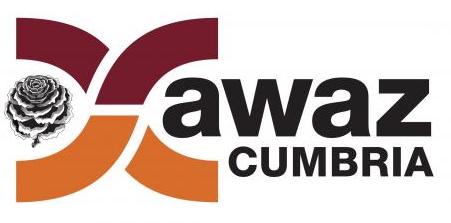Multi-Faith Chaplaincy in Healthcare Services in Cumbria
Keith Munnings, Vice-Chair of the Multi-Faith Group for Healthcare Chaplaincy (Department of Health) and Chair of the Buddhist Healthcare Chaplaincy Group spoke to an interfaith group in Kendal on 5 November 2013. He shared his experience of over eight years working in voluntary chaplaincy work, in Birmingham hospitals where a significant minority of in-patients are from non-Christian backgrounds. He also serves on the national Multi-Faith Healthcare Group which generally meets in London. He sees it as an act of love and service, in a privileged position, serving a faith community and the NHS. He tries to provide comfort and support by listening first, then responding appropriately.

Where are chaplains found in the community?
As well as in healthcare settings, chaplaincy is found in schools and institutions of further and higher education, prisons, industry, airports, the armed services, larger retail stores and shopping centres.
How has chaplaincy come about and how can a local community provide support?
It is an attempt to meet religious, emotional and spiritual needs, offering teachings and rituals if needed and thought appropriate. There is a strict Code of Conduct for Chaplains not to proselytise. They are accountable to the public body.
Keith finds that ‘it is a wonderful opportunity to give support through times of anxiety and frustration’; ‘spiritual care doesn’t have to mention beliefs and faiths’. Meetings may involve three groups: patients, relatives and staff.
He mentioned other forms of chaplaincy such as street pastors who try to meet the needs found usually in the evenings and nights. Some people encountered may be lonely and may respond to a kind word and a smile. A chaplain may be present at Farmers’ Markets.
Opportunities arise when new hospital buildings or other public buildings are planned. Provision can be made for faith centres and rooms for meditation where local volunteers can play a part.
What problems may arise?
Senior management may see no place for faiths and remove the role of chaplain from the establishment.
Volunteer chaplains have to cope with diversity of beliefs and minister to a range of faiths and to those of no faith. Faith boundaries may get in the way. Chaplains can suffer ‘burn-out’. They need to be emotionally resilient.
What can faith communities better do to support chaplaincy?
Identify situations in the local community and places where there might be suffering and stress. Keith gave an example of a local Council bringing in a chaplain temporarily when staff suffered as a result of a spatial reorganisation with decreased personal space.
Tim Baynes contributed that he had worked as an industrial chaplain. He saw the role of Trade Unions as important as they seek to reconstruct the way workers are treated. Seeds of kindness towards patients do not just come from chaplains. There are many caring organisations in Kendal doing similar work to chaplains. It is right to encourage publicity about those helped by such organisations and to make the wider community aware of co-operation between faiths.
It was commented that local needs need to be identified and recognised. Also what is missing in the way of facilities and support for needs.
How are chaplains helped?
There are regular team meetings and debriefing sessions or ‘reflected practice’.
In a ‘reflective journal’ the sequence of events is written down as a narrative and a critique is made: what lessons have been learnt; what went well; what might be done differently?
Chaplains have a role in emergency disaster plans and situations. They can offer reassurance and support to survivors.
